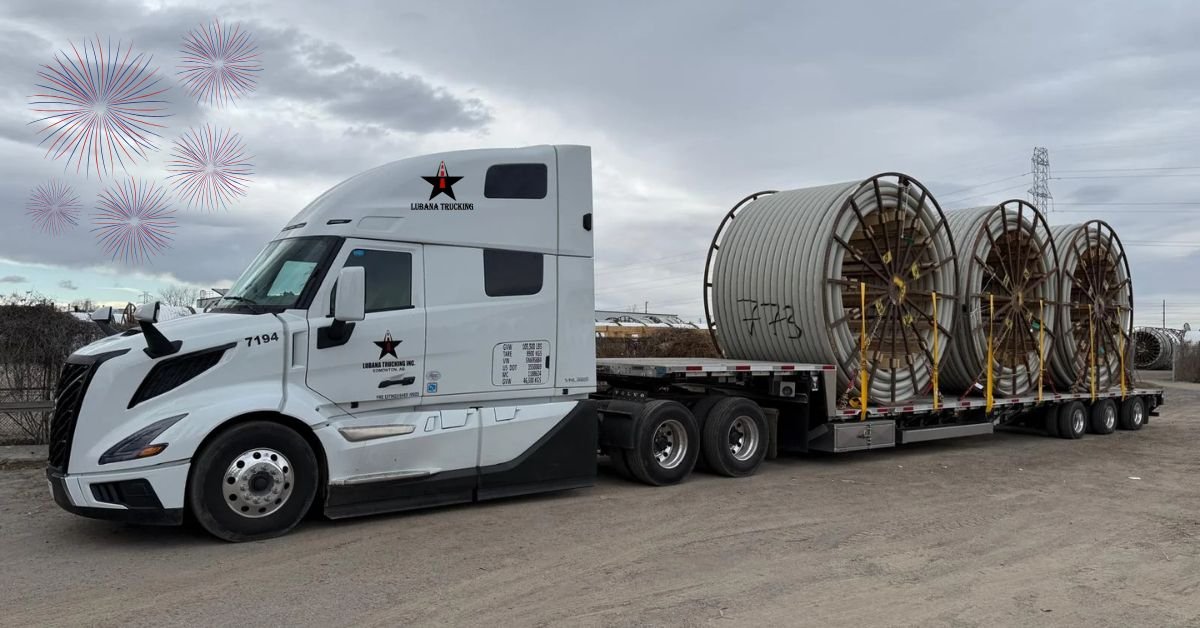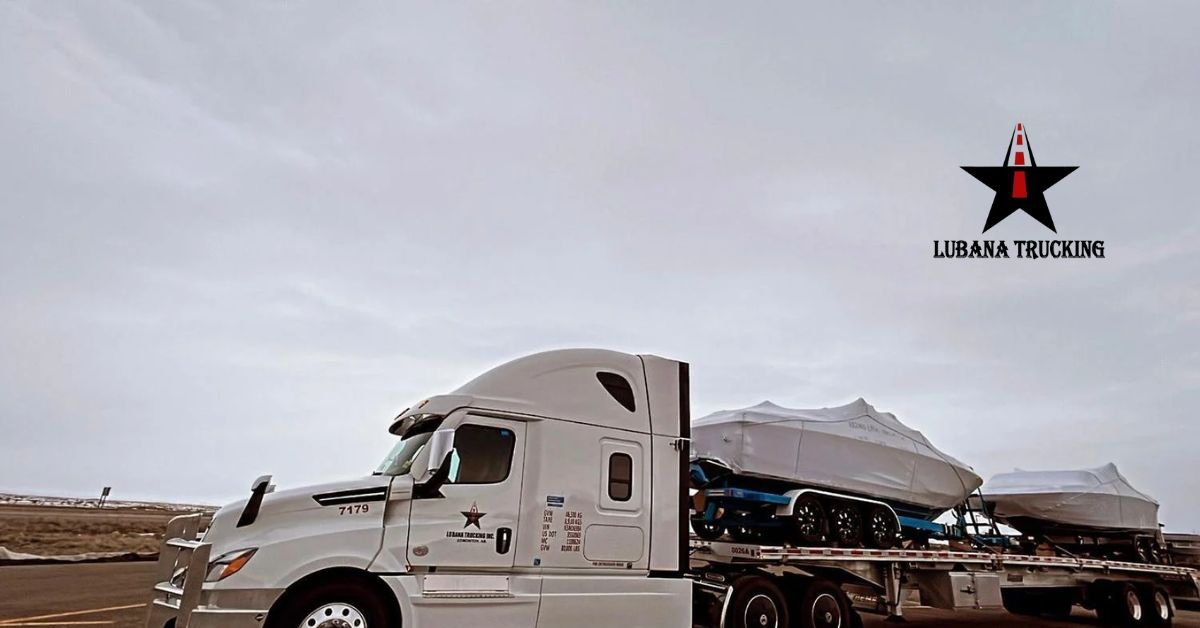When it comes to shipping freight across long distances, choosing the right type of trailer is just as important as selecting the right carrier. Two of the most common trailer types in the trucking industry are flatbed and dry van trailers. While both serve critical roles in freight transport, they are designed for different purposes and offer unique advantages.
In this guide, we’ll explore the differences between flatbed and dry van trailers, the types of freight best suited for each, and how to decide which option is right for your shipping needs.
What is a Flatbed Trailer?
A flatbed trailer is an open, flat platform without sides or a roof. This design makes it ideal for transporting large, heavy, or irregularly shaped items that don’t fit easily into a standard enclosed trailer.
Key Features of Flatbed Trailers:
- Open deck: No walls or roof, allowing for cargo loading from any angle.
- Versatile loading/unloading: Forklifts, cranes, or manual loading can be used.
- Load dimensions flexibility: Great for over-dimensional or oversized loads.
- Weight capacity: Generally higher weight limits due to reinforced design.
What is a Dry Van Trailer?
A dry van trailer is a fully enclosed trailer, similar to a large box on wheels. It protects cargo from weather, theft, and damage during transport, making it the most common type of freight trailer on the road.
Key Features of Dry Van Trailers:
- Enclosed box: Keeps cargo secure and protected.
- Standard dimensions: Typically 53 feet long.
- Weatherproof: Ideal for perishable or sensitive items.
- Widely used: Suitable for a wide range of dry goods.
Flatbed vs Dry Van: Side-by-Side Comparison
| Feature | Flatbed Trailer | Dry Van Trailer |
|---|---|---|
| Structure | Open deck | Enclosed box |
| Weather Protection | No | Yes |
| Cargo Security | Needs strapping/tarping | Naturally secure |
| Load/Unload Access | From all sides | Rear access only |
| Best For | Machinery, steel, oversized loads | Palletized goods, furniture, packaged products |
| Weight Capacity | Typically higher | Standard capacity |
| Loading Equipment | Cranes, forklifts, side loaders | Forklifts (rear only) |
| Common Industries | Construction, agriculture, energy | Retail, manufacturing, consumer goods |
When Should You Choose a Flatbed Trailer?
Flatbed trailers are best suited for:
- Oversized or irregularly shaped cargo (e.g., pipes, beams, machinery)
- Construction materials like lumber, rebar, and scaffolding
- Heavy equipment that can’t fit inside a van
- Cargo that needs to be loaded/unloaded from the side or top
- Loads requiring tarping instead of boxed storage
If your shipment exceeds the typical dimensions of a dry van or requires more flexible access for loading, a flatbed is the better choice.
When Should You Choose a Dry Van Trailer?
Dry vans are ideal for:
- Standard palletized shipments
- Packaged consumer goods
- Retail freight or e-commerce items
- Products that must be protected from the elements
- High-value or theft-prone goods
If your shipment needs protection from weather or theft, or if it’s a typical box or palletized product, dry van is the safer and more efficient choice.
Flatbed Trailer: Advantages and Disadvantages
| Advantages | Disadvantages |
|---|---|
| Can transport oversized or irregular loads | No protection from weather (requires tarps) |
| Load/unload from any side or top | Higher risk of theft or damage |
| No loading dock needed | Requires extra time for strapping/tarping |
| Ideal for construction materials, machinery, steel, lumber | Not suitable for fragile or high-value goods |
| Easier handling of heavy or bulky equipment | Additional permits may be needed for wide loads |
Dry Van Trailers: Advantages and Disadvantages
| Advantages | Disadvantages |
|---|---|
| Fully enclosed — protects cargo from weather and theft | Rear access only — limited loading flexibility |
| Great for palletized, boxed, or packaged goods | Not suitable for oversized or irregular freight |
| Ideal for high-value or fragile items | Requires loading dock for efficient operations |
| Efficient and faster for standard freight handling | Lower weight capacity compared to flatbeds |
| Commonly used and widely available across industries | Less flexibility for non-standard cargo types |
Cost Differences Between Flatbed and Dry Van
Pricing varies based on fuel rates, distance, weight, and urgency, but in general:
- Flatbed transport can be slightly more expensive due to:
- The need for specialized equipment
- Strapping/tarping labor
- Permits for oversized loads (if required)
- Dry van rates tend to be more stable and cost-effective for standard freight, especially if shipped in bulk or under contract.
Which Trucking Option is Right for You?
Ask yourself the following questions:
- Is my freight sensitive to weather or theft?
→ Choose dry van. - Does my cargo exceed standard trailer dimensions or weights?
→ Choose flatbed. - Do I need to load from the side or top?
→ Choose flatbed. - Is the freight boxed or palletized?
→ Choose dry van. - Is there a loading dock at pickup/delivery?
→ If not, flatbed might be more practical.
Final Thoughts
Both flatbed and dry van trailers play essential roles in modern freight transportation. The right choice depends on your freight’s size, shape, sensitivity, and delivery logistics.
Choosing wisely between the two can:
- Save you money
- Reduce delivery delays
- Improve cargo safety
- Optimize loading/unloading operations
If you’re unsure which option is best for your freight, consulting with an experienced logistics provider like Lubana Trucking can help you make the right decision. With a reliable network and deep industry experience, Lubana Trucking ensures your cargo reaches its destination safely and on time.
Need help deciding between flatbed and dry van transport for your business?
Contact US today and get expert guidance tailored to your freight.



